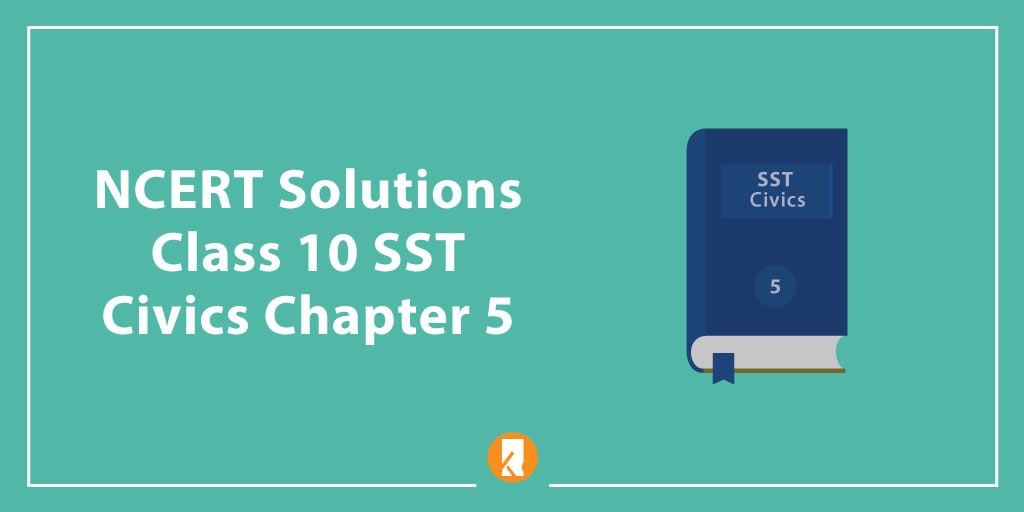
NCERT Solutions Class 10 SST Civics Chapter 5: Difficulty in Finding Answers for Class 10 Social Science Questions? You don’t need to worry. Make your 10th SST Civics Preparation Easier with NCERT Solutions Class 10 SST Civics Chapter 5 – Popular Struggles and Movements. Chapter 5 Civics 10th Social Science contains all the Topic wise Important Questions Listed.
NCERT Solutions for Class 10 SST Civics Chapter 5 – Popular Struggles and Movements
Access NCERT Solutions for Class 10 SST Civics Chapter 5 PDF Prepared by Subject experts to make your Preparations Easier and in More Understanding Way and download some Important Questions.
Get All Chapters NCERT Class 10 Social Science Solutions to Crack the Exam with Ease.
Popular Struggles and Movements Summary
In chapter 5 of NCERT Social Science Civics textbook – Democratic Politics-II we have discussed what a pressure group is and its role in the Indian society. Students will be taught about the popular struggles in India and across the world. The idea behind this chapter is to expose students to the sectional interest groups, which are a form of a pressure group. The popular movements in India, like the Assam students’ movement, will be introduced along with the role of pressure groups in the politics of the government.
The students will also get to know about the following topics:
- Popular struggles in Nepal and Bolivia
- Movement for democracy in Nepal
- Bolivia’s Water War
- Democracy and popular struggles
- Mobilisation and organisations
- Pressure groups and movements
- Is their influence healthy?
‘Democratic Politics-II’ is an important book for Class 10 Social Science subject. Apart from this chapter, the full set of NCERT Solutions for Class 10 Social Science is given in the linked article.
Advantages of Solving NCERT Solutions Class 10 SST Civics Chapter 5
- Detailed Explanation to the Questions
- A Unique way of Understanding Concepts
- Helps in Preparation of 10th Social Science
- Boosts Class 10 Marks
Other Important CBSE NCERT 10th Social Science Solutions
You should have solutions to boost your exam preparation for the CBSE Class 10 Social Science exam. From below you can download Chapter-Wise Class 10 Social Science NCERT Solutions PDF.
Class 10 Geography (Contemporary India – II)
- Geography Chapter 1: Resources and Development
- Geography Chapter 2: Forest and Wildlife Resources
- Geography Chapter 3: Water Resources
- Geography Chapter 4: Agriculture
- Geography Chapter 5: Minerals and Energy Resources
- Geography Chapter 6: Manufacturing Industries
- Geography Chapter 7: Lifelines of National Economy
Class 10 Political Science (Democratic Politics -II)
- Political Science Chapter 1: Power Sharing
- Political Science Chapter 2: Federalism
- Political Science Chapter 3: Democracy and Diversity
- Political Science Chapter 4: Gender, Religion, and Caste
- Political Science Chapter 5: Popular Struggles and Movements
- Political Science Chapter 6: Political Parties
- Political Science Chapter 7: Outcomes of Democracy
Class 10 Economics (Understanding Economic Development)
- Economics Chapter 1: Development
- Economics Chapter 2: Sectors of the Indian Economy
- Economics Chapter 3: Money and Credit
- Economics Chapter 4 – Globalization and the Indian Economy
- Economics Chapter 5 – Consumer Rights
Class 10 History (India and The Contemporary World – II)
- History Chapter 1- The Rise of Nationalism in Europe
- History Chapter 2- The Nationalist Movement in Indo-China
- History Chapter 3- Nationalism in India
- History Chapter 4- The Making of a Global World
- History Chapter 5- The Age of Industrialisation
- History Chapter 6- Work, Life and Leisure
- History Chapter 7- Print Culture and the Modern World
- History Chapter 8- Novels, Society and History
Now that we have covered NCERT Solutions Class 10 SST Civics Chapter 5: Popular Struggles and Movements, the students who are yet to appear for the class 10th board examination are expected to go through the solution in depth.
The following NCERT Solutions Class 10 SST Civics Chapter 5 has been prepared by experienced teachers in KopyKitab. Students can rely on the pdf attached to the article. Students are advised to go through it very thoroughly and understand the basics around the whole chapter. Have fun studying.
